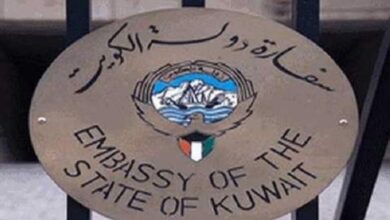Population in Kuwait crosses the five million mark
With Kuwait’s population surpassing five million for the first time, the latest demographic snapshot underscores the urgent need for strategic urban planning — as expatriates dominate the workforce and districts like Salmiya and Farwaniya strain under mounting density.

Kuwait’s population has for the first time in its history exceeded the five million milestone, with latest demographic data from the Public Authority for Civil Information (PACI) revealing that the country’s population as of mid-2025 stood at 5,098,000.
Kuwaitis make up 30 percent of the population at 1,550,000, while expatriates account for the remaining 70 percent at 3,547,000. Indian community remains the largest expatriate group at 1.036,000 (29%) followed by Egyptians at 661,318 (19%).
The age structure shows that 17 percent are under 15, 80 percent are aged 15–64, and only 3 percent are over the age of 65. The dominant age group is the 35–39 age cohort, comprising 13 percent of the population.
Gender-wise, there are 3,090,000 males, representing 61 percent of the population and 2,008,000 are female, forming 39 percent. In terms of family type, 79 percent live in private families (4,057,000), while 21 percent (1,040,000) live in collective families.
Kuwait has 2,283,000 employed persons, representing 45 percent of the population, with 519,989 in the government sector and 1,763,000 in the private sector. Kuwaitis make up 75.6 percent of the government workforce, while in the private sector, Indians dominate at 31.2 percent of the workforce, followed by Egyptians (24.8 %). Despite government initiatives to encourage Kuwaitis into the private sector, they account for only 3.8 percent of the workforce in this sector. Among Kuwaiti citizens, 32 percent of males and 31 percent of females are in the labor force, while 37 percent of women are outside it.
There are 822,794 domestic workers in Kuwait, 58.2 percent of whom are women, forming 26 percent of the workforce and 16 percent of the total population. Top nationalities include, Indians (41.3 %),; Filipinos (17.9%), and Sri Lankans (17.6%)
On the marital status front 2,309,000 people are married; 1,697,000 million are unmarried; 124,965 are divorced, with female citizens (55,400) making up twice the number of divorced resident women (25,315),. and 47,517 are widowed.
The demographic data also highlights urban pressure, with population surge in key areas prompting calls for strategic planning. Salmiya has emerged as the most densely populated area in Kuwait, registering a total population of 331,462 residents. This reflects the growing demand for housing and services in this coastal and commercially vibrant district.
Al-Farwaniya ranked second with 309,871 residents, followed closely by Jleeb Al-Shuyoukh, which recorded 282,263 people. These two areas continue to be among the most crowded, often associated with high concentrations of expatriate labor and limited urban space, raising planning and infrastructure concerns.
Coming in fourth place was Hawalli with a population of 242,214, maintaining its status as a key residential and commercial hub. Mahboula secured the fifth position, reaching a population of 230,854, highlighting its steady growth driven by new housing developments and proximity to key employment zones.
This updated population data provides valuable insights for urban planners, policymakers, and service providers. With shifting population trends, the figures serve as a strategic tool for allocating resources, expanding infrastructure, and enhancing the delivery of public services to meet future demand.













